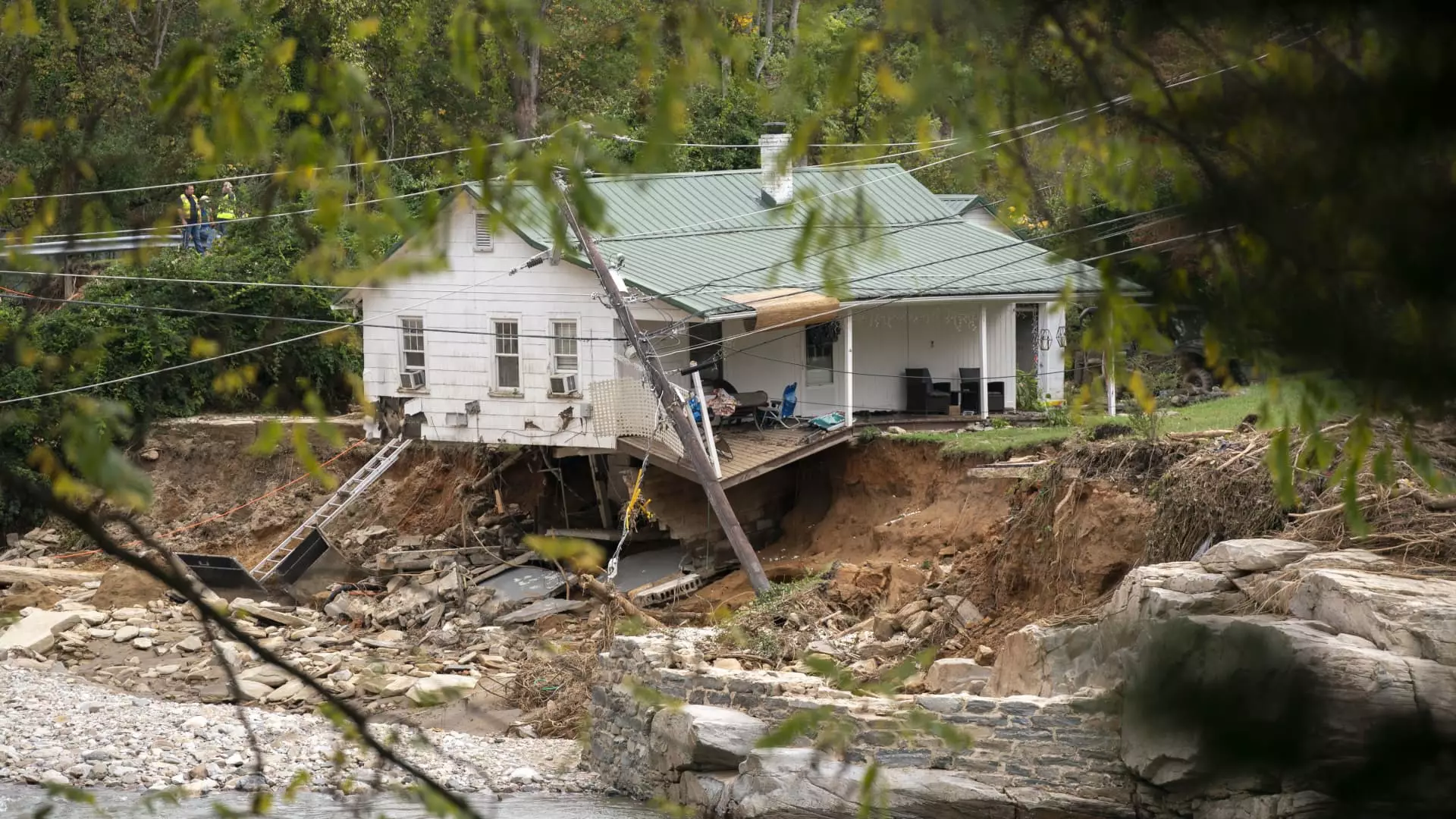Hurricane Helene has marked a significant point in the conversation around climate risks and their impact on homeowners. With insured losses estimated to exceed $6 billion and staggering uninsured losses, particularly in North Carolina, the need for effective flood insurance is clearer than ever. Unfortunately, a considerable number of homeowners in areas particularly prone to flooding lack adequate coverage. This gap is largely attributed to the limitations of the Federal Emergency Management Agency‘s (FEMA) flood zone designations, which fail to encompass all homes at risk.
The current landscape reveals that approximately 96% of homes in North Carolina are not located in officially designated flood zones, creating a false sense of security among homeowners. This perilous oversight makes residents vulnerable to significant financial losses, as climate change continues to exacerbate the impact of severe weather events. The introduction of innovative technology and data analytics by climate risk firms, however, signals a substantial shift in how homeowners and potential buyers can approach decisions related to flood insurance.
First Street, a climate risk intelligence firm, has released groundbreaking risk assessment tools that integrate climate change data into property evaluations. By analyzing various climate-related threats, particularly flooding, First Street aims to inform buyers and sellers alike. This technology is particularly relevant as it coincides with shifting mindsets among homebuyers, who are increasingly factoring in climate risks in their purchasing decisions.
Skylar Olsen, chief economist at Zillow, emphasizes the importance of this development, stating that the availability of property-specific climate risk data enables homeowners to make better-informed decisions. Each for-sale listing now includes risk scores assessing flooding, wildfire, extreme winds, and other potential hazards. Furthermore, this data provides projections on how risks may evolve over the next 15 and 30 years, mirroring the standard terms for fixed-rate mortgages.
As climate change assumptions become integral to understanding property values, more than 80% of prospective buyers are now considering climate risk as a vital criterion in their decision-making processes. This transition marks a shift toward responsible homeownership and investment that prioritizes sustainability and risk awareness.
A common misconception persists among many homeowners: the belief that residing outside a FEMA-designated flood zone offers complete protection from potential flooding. However, Ed Kearns, chief science officer at First Street, warns individuals that heavy rainfall can affect a broad swath of land, extending beyond official flood maps. This blind spot can lead homeowners to risk substantial financial losses due to inadequate insurance coverage.
Nonetheless, the innovative flood maps developed by First Street provide a more accurate representation of flood risk that accounts for environmental changes and intensifying weather patterns. This approach empowers homeowners to make informed decisions regarding their flood insurance needs, ultimately underscoring the necessity for comprehensive insurance coverage across all properties—regardless of their FEMA status.
The implications of integrating climate risk data into real estate are profound. As buyers prioritize homes with lower climate risks, property values in areas that face significant hazards may decline. Zillow’s analysis of August listings indicates a notable increase in homes with substantial climate risks over the last five years, reflecting changing markets. For instance, 16.7% of new listings were identified as having major wildfire risks, and 12.8% were flagged as at risk for flooding.
Factors such as insurance costs and long-term sustainability will shape home values going forward. A rise in insurance premiums corresponding to heightened risk assessments may further exacerbate declines in property values in flood-prone areas. As Kearns warns, the quantification of climate risks is likely to exert a direct impact on the real estate market, further entwining insurance costs with property valuation and affordability—a trend that prospective buyers must consider seriously.
Advancing technology in climate risk assessment highlights the critical need for homeowners to recognize and understand the implications of climate-related hazards. As homeowners reassess their insurance coverage in light of evolving data and projections, they will not only protect their investments but contribute toward a broader, more sustainable approach to homeownership in the age of climate change.

